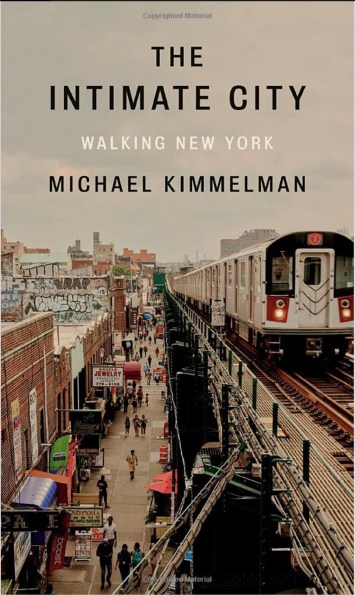Review | ‘The Intimate City: Walking New York’ by Michael Kimmelman
A Curated, Lively, and Very Loving Portrait of New York City at the Height of the Pandemic

At the beginning of the coronavirus pandemic, it was not uncommon for people to pause and imagine a project they might carry out that would be difficult to do otherwise. Michael Kimmelman, the architect critic for the New York Times, had a particularly ambitious idea. He wrote to colleagues and friends, “With everything shuttering and people increasingly likely to feel stir crazy at home, I am thinking of doing a modest series for The Times: architectural walks around the city, in which I am taken on these tours by different people.” Kimmelman sought “distraction, joy, consolation.” However, the “abiding thought in this book” would be “the glory of the city, not … COVID-19.”
Encountering the essays now, as the book The Intimate City: Walking New York, published after the worst of the pandemic has apparently passed, does take away some of the urgency Times readers must have felt encountering the pieces in the spring, summer, and fall of 2020, when a cure for COVID was still an uncertain promise, and the future of civilization sometimes felt as though it might be in the balance. At the time of their original publication, the walks must have felt reassuring, with Kimmelman and his guest hosts — architects, professors, urban designers, historians, authors, community activists — spending much of their time on not only the concrete past and present of the neighborhoods, but also speculating about their futures — and there would be a future, everyone was confident of that.
In 2023, The Intimate City reads more like a very classy guidebook covering a once-again bustling metropolis, very unlike the one Kimmelman and Broadway scenic designer David Rockwell found as they wandered the Great White Way in March, 2020, when, “aside from a melancholy hot dog vendor and a few grifters in ratty Elmo and Batman costumes, smoking and waiting vainly near a subway exit for easy marks, no one else was around.” Now, of course, a trip though the East Village or 42nd Street or Rockefeller Center would be crowded with tourists, though that does not diminish the interest of the many details Kimmelman and his cohorts helpfully supply, e.g., the East Village was predominately German until a steamship disaster resulting in the death of 1,400 passengers caused a “psychological toll” that emptied out the neighborhood; eminent domain was “weaponized” against the Times Square and 42nd Street neighborhood to “demolish low-income, minority neighborhoods and replace them with highways, or unloved, badly maintained tower-in-the-park housing developments”; and before becoming a tourist hub, what’s now Rockefeller Center was “flophouses, whorehouses, and speakeasies.”
The wealth of photographs, many of them by Zak DeZon and Vincent Tullo, are predictably gorgeous, showing everything from glass and steel abstractions to leafy neighborhood streets to grand river vistas. A reader’s only likely complaint is that the photos — presumably in an effort to more seamlessly incorporate them into the text — are not captioned. And while it’s generally easy to figure out which image goes with which passage of prose, that’s not always the case.
Still, it’s hard to dislike The Intimate City, and it’s easy to imagine it tucked into a visitor’s backpack and retrieved periodically in Brooklyn and Queens, in the Bronx and up and down Manhattan, each chapter offering a window onto what might otherwise be an opaque urban landscape. Granted, Kimmelman and company don’t pretend to be comprehensive when covering each of the 19 areas in the book, but what they do offer is a curated, lively, and very loving portrait of New York City.
This review originally appeared in the California Review of Books.




You must be logged in to post a comment.